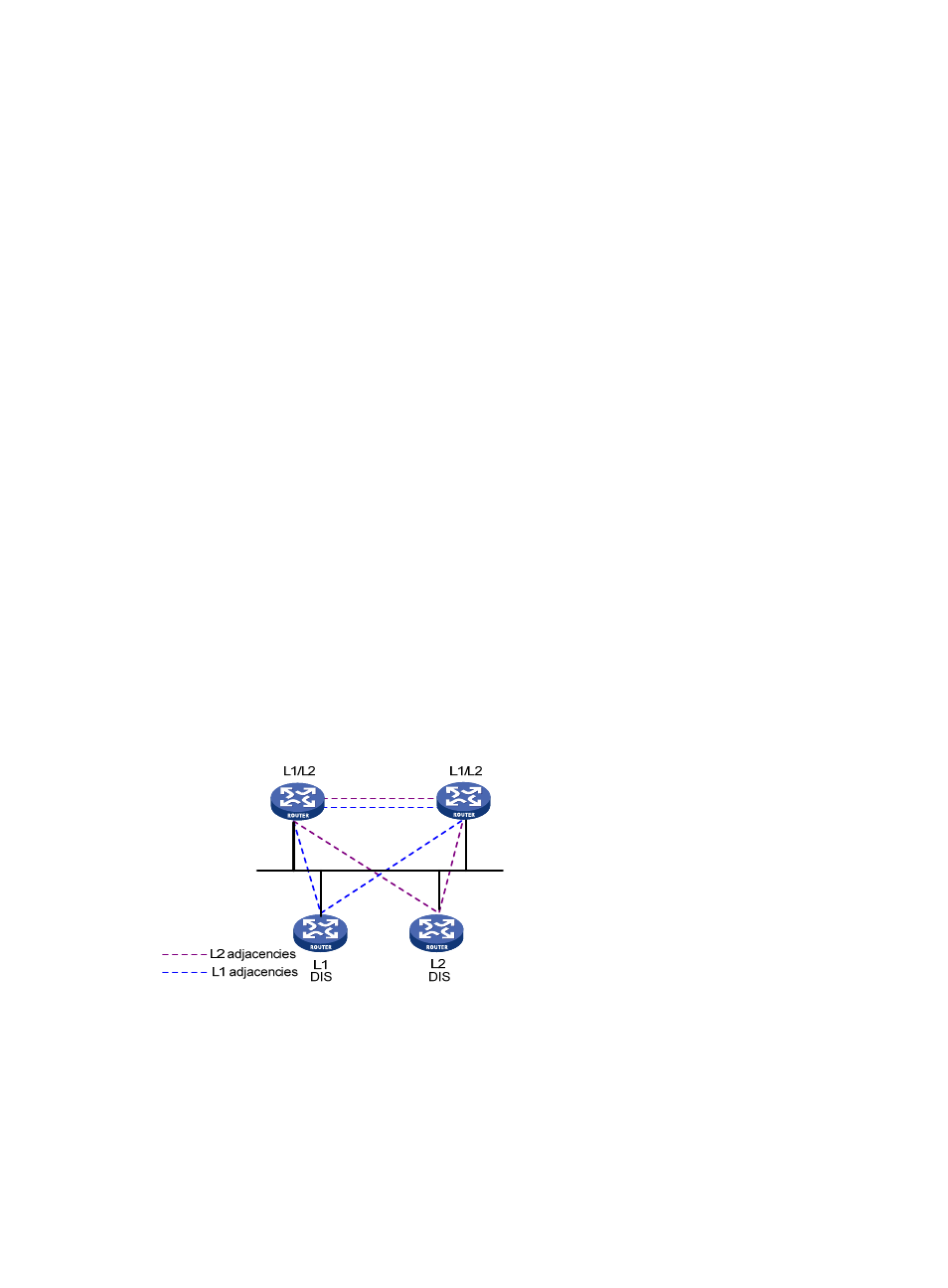Is-is network type, Network type, Dis and pseudonodes – H3C Technologies H3C S12500 Series Switches User Manual
Page 152

136
The routing information of a Level-1 area is sent to the Level-2 area through the Level-1-2 router. Therefore,
the Level-2 router knows the routing information of the entire IS-IS routing domain. But the Level-1-2 router
does not share the information of other Level-1 areas and the Level-2 area with the Level-1 area by default.
Because a Level-1 router simply sends packets destined for other areas to the nearest Level-1-2 router, the
best paths might not be selected. To resolve this problem, route leaking was introduced. A Level-2 router
can advertise Level-2 routing information to a specified Level-1 area. By having the routing information of
other areas, a Level-1 router in the area can make a better routing decision for a packet to another area.
IS-IS network type
Network type
IS-IS supports only broadcast network, such as Ethernet and Token-Ring.
DIS and pseudonodes
On an IS-IS broadcast network, a router is elected as the Designated Intermediate System (DIS).
The Level-1 and Level-2 DISs are elected. You can assign different priorities to different level DIS elections.
The higher the router's priority is, the more likelihood the router becomes the DIS. If there are multiple
routers with the same highest DIS priority, the one with the highest SNPA (Subnetwork Point of Attachment)
address (MAC address on a broadcast network) will be elected. A router can be the DIS for different
levels.
IS-IS DIS election differs from OSPF DIS election in the following ways:
•
A router with priority 0 can also participate in the DIS election.
•
When a router is added to the network and becomes the new DIS, an LDP flooding process is
triggered.
As shown in
, the same level routers on a network, including non-DIS routers, establish
adjacencies with each other.
Figure 55 DIS in the IS-IS broadcast network
The DIS creates and updates pseudonodes, as well as generates their LSPs, to describe all routers on the
network.
A pseudonode represents a virtual node on the broadcast network. It is not a real router. In IS-IS, it is
identified by the system ID of the DIS and a 1-byte Circuit ID (a non-zero value).
Using pseudonodes can reduce the resources consumed by SPF and simplify network topology.